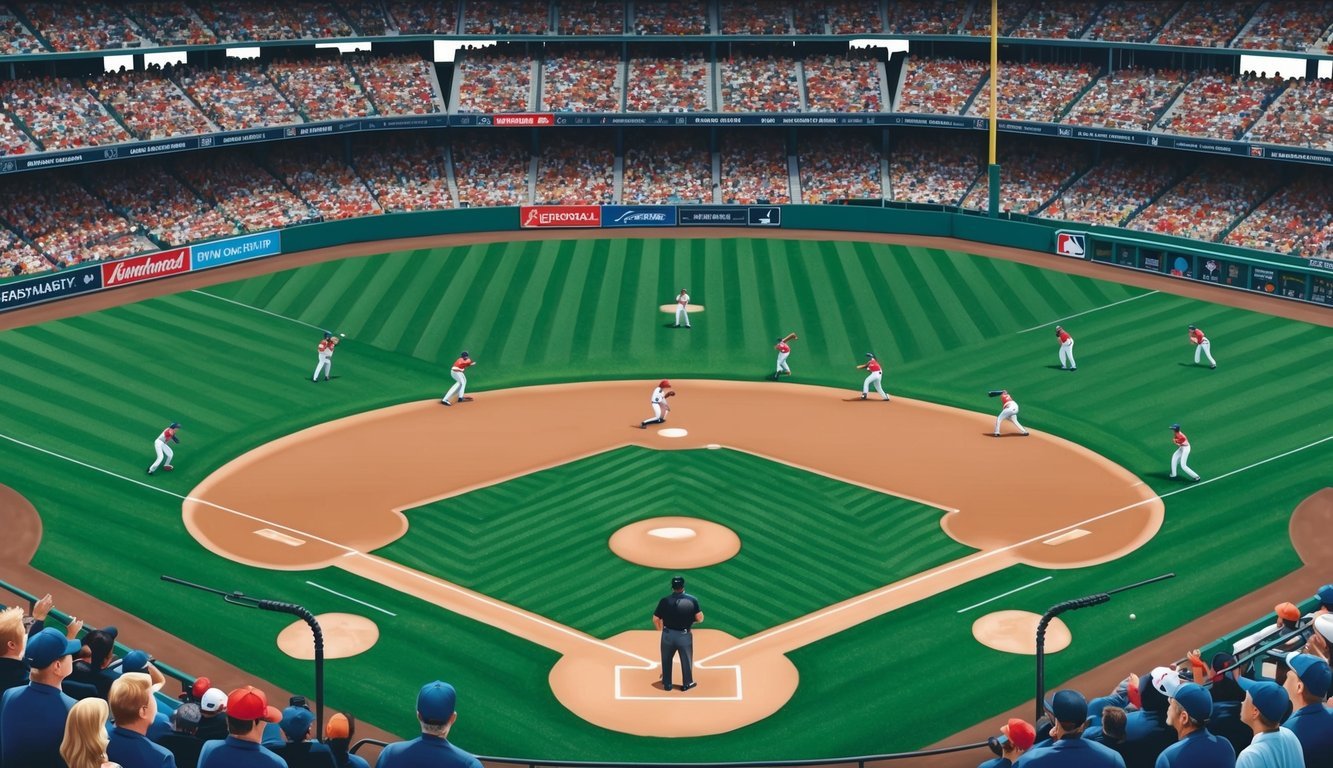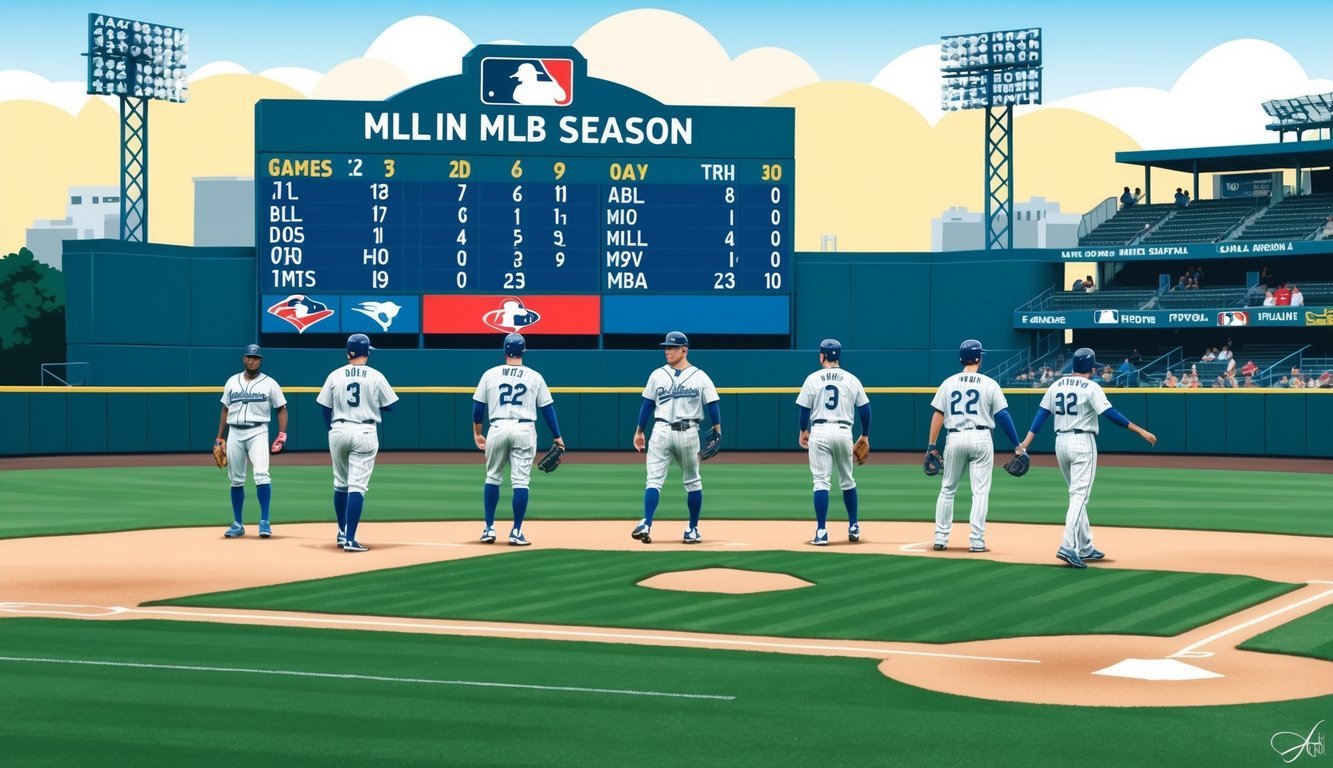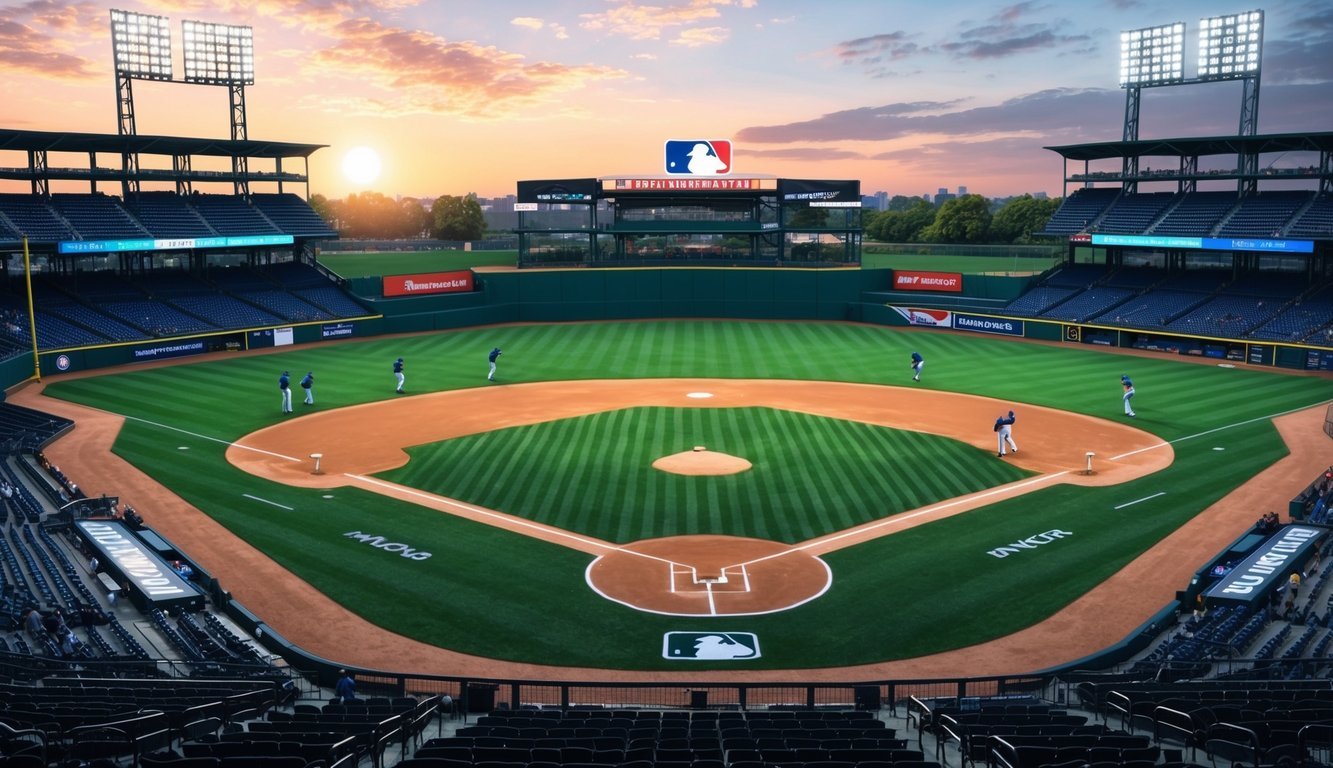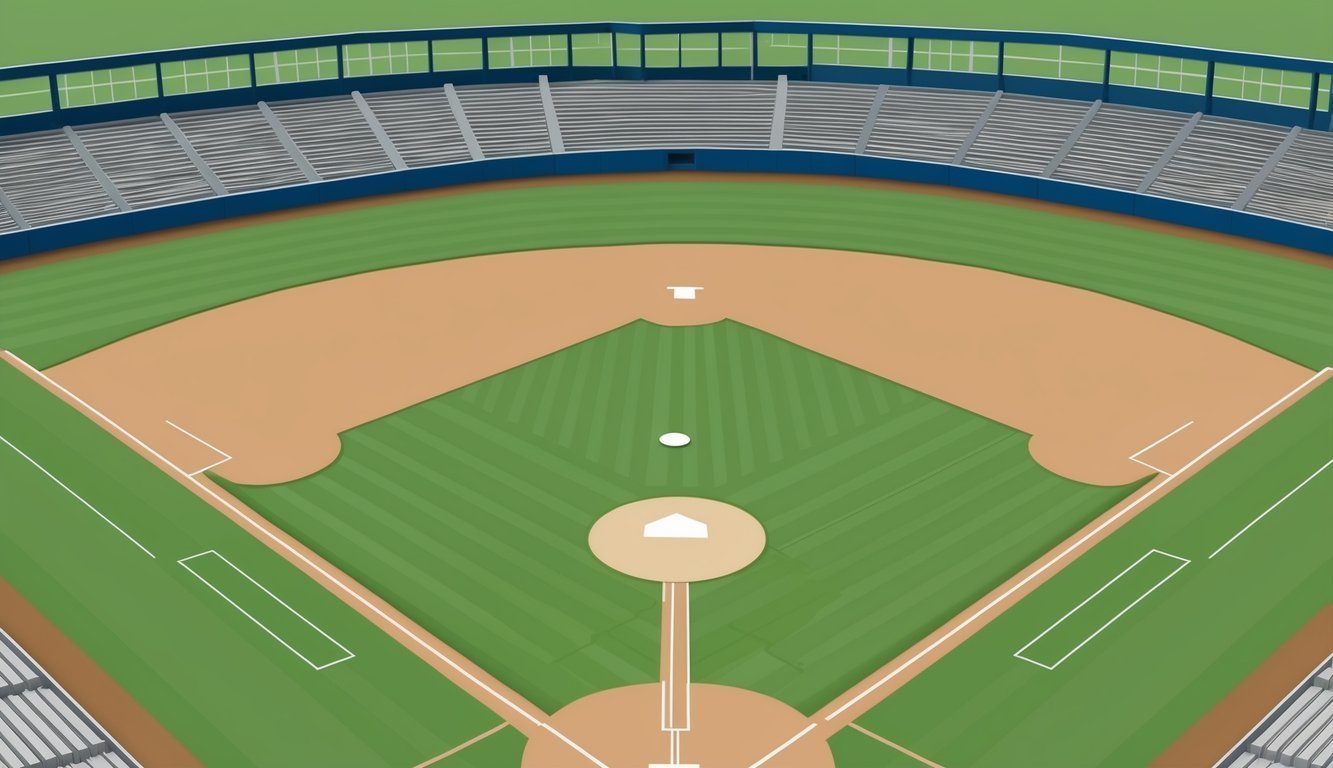Baseball fans eagerly anticipate the start of each Major League Baseball season, a marathon of excitement that spans several months.
The MLB schedule is a testament to the sport’s endurance and passion, with teams crisscrossing the country to compete in ballparks from coast to coast.
Each MLB team plays a whopping 162 regular-season games over approximately six months. This extensive schedule allows for intense divisional rivalries and cross-league matchups that keep fans engaged throughout the spring and summer.
The 162-game format has been a staple of the MLB since 1962, providing ample opportunities for players to showcase their skills and for teams to battle for playoff positions.
The breakdown of games includes multiple series against divisional opponents and interleague play, ensuring a diverse and challenging schedule for all 30 MLB teams.
From Opening Day to the final regular-season game, baseball enthusiasts are treated to a daily dose of America’s pastime, with the promise of October baseball looming on the horizon for the top-performing clubs.
Understanding the MLB Regular Season Structure
Major League Baseball’s regular season is a grueling marathon spanning 162 games.
This extensive schedule tests teams’ depth, endurance, and consistency over a six-month period.
With such a demanding slate of games, managers must carefully manage workloads to keep their rosters fresh and competitive.
Roster size plays a crucial role in determining how many players on a baseball team are available for each game, with strategic substitutions and player rotations being essential.
Success in the long season often hinges on maintaining both individual performance and overall team chemistry.
Breakdown of the 162-Game Schedule
The MLB’s 162-game schedule is designed to provide a comprehensive test of each team’s abilities.
Teams play almost daily, with occasional off-days for travel and rest.
The season typically starts in late March or early April and concludes in early October.
Each team faces division rivals more frequently, playing 19 games against each divisional opponent.
This accounts for 76 games of the schedule.
The remaining 86 games are split between other teams in the same league and interleague matchups.
Home and away games are generally balanced, with teams playing 81 games at their home ballpark and 81 on the road.
This structure ensures fairness and gives fans ample opportunities to see their favorite teams in action.
Divisional Play and Interleague Matchups
Divisional play forms the backbone of the MLB schedule.
Teams compete most often against their divisional rivals, creating intense rivalries and crucial head-to-head matchups that can determine playoff spots.
Interleague play adds variety to the schedule.
Each team faces opponents from the other league, providing unique matchups and allowing fans to see players they might not otherwise encounter.
The number of interleague games has increased in recent years, adding excitement to the regular season.
The schedule also includes series against non-divisional teams within the same league.
These games help determine wild card standings and offer a broader test of a team’s abilities against various playing styles and strategies.
The Significance of Series in MLB

Series play a crucial role in Major League Baseball, shaping team standings and the overall structure of the season.
They provide a unique rhythm to the baseball calendar and offer teams multiple chances to face each opponent.
The Role of Series in Determining Team Standings
MLB teams typically play multiple games against the same opponent in a row, known as a series.
These series usually consist of three or four games, though two-game sets occasionally occur.
Winning a series can give a team momentum and help boost their position in the standings.
It’s often said that good teams win series consistently rather than focusing on individual game outcomes.
Teams aim to win or “take” a series by winning the majority of games played.
This approach helps manage pitching rotations and player rest while still prioritizing overall success.
How Series Shape the MLB Calendar
The MLB regular season is built around series, with teams playing 162 games over approximately six months.
This structure allows for efficient travel schedules and creates natural breaks in the season.
Series typically start on Monday, Friday, or occasionally Thursday, with weekend series being particularly popular among fans.
This pattern creates a rhythm to the baseball season, with teams often playing 3-4 series per week.
The series format also impacts how teams approach their roster management.
Managers must consider pitching rotations, player rest, and matchups not just for individual games, but for entire series.
During the postseason, series take on even greater importance.
Playoff rounds are decided by best-of-five or best-of-seven series, intensifying the drama and strategy of each matchup.
Postseason Path to the World Series

The MLB postseason is an exciting journey for teams vying for the World Series title.
It involves multiple rounds of intense competition, with each series presenting new challenges and opportunities for glory.
The Journey from Division Series to Championship Series
The Division Series kicks off the main playoff bracket.
It’s a best-of-five showdown between division winners and top wild card teams.
Winning this round is crucial for advancing to the League Championship Series.
The League Championship Series raises the stakes even higher.
It’s a best-of-seven battle to determine who represents each league in the World Series.
Home-field advantage can play a big role in this round.
Teams that make it to the World Series have proven their mettle through tough competition.
The Fall Classic is the ultimate test, with a best-of-seven format that often produces unforgettable moments in baseball history.
Wild Card Rounds and Their Impact
The Wild Card Series is a relatively new addition to the MLB postseason.
It’s a best-of-three matchup between lower-seeded playoff teams.
This round gives more teams a shot at postseason glory.
Wild Card winners face a tough road ahead.
They often have to use their top pitchers just to advance, which can impact their performance in later rounds.
However, the excitement of these do-or-die games is hard to beat.
The expanded Wild Card format has changed how teams approach the end of the regular season.
It’s created more meaningful September baseball and given fans in more cities hope for a playoff run.
Comparing MLB to Other Sports Leagues

Major League Baseball stands out among professional sports leagues for its lengthy season and unique playoff structure.
The MLB’s schedule and postseason format differ significantly from those of other major North American leagues.
Number of Games: MLB vs. NFL, NBA, NHL
MLB teams play a staggering 162 regular-season games each year.
This dwarfs the NFL’s 17-game schedule and far exceeds the NBA and NHL, which both play 82 games per season.
The baseball season typically runs from early April to late September or early October.
Teams often play 6-7 days a week, with occasional off-days for travel.
In contrast, NFL teams generally play once a week, while NBA and NHL teams usually have 2-3 games per week.
Playoff Structures Across Major Sports Leagues
MLB’s playoff format includes 12 teams: six from each league.
This expanded format, introduced recently, features three division winners and three wild card teams per league.
The playoffs begin with a best-of-three Wild Card Series, followed by best-of-five Division Series and best-of-seven League Championship Series.
The World Series, also best-of-seven, crowns the champion.
NFL playoffs involve 14 teams in a single-elimination tournament.
NBA and NHL postseasons each feature 16 teams in best-of-seven series throughout.
These leagues have longer playoff runs compared to MLB’s more compact postseason structure.
Special Considerations in the MLB Schedule

The MLB schedule incorporates flexibility to handle unexpected events and labor disputes.
These factors can significantly impact the season’s flow and player performance.
Managing Rainouts and Doubleheaders
Weather plays a crucial role in baseball, often leading to game postponements.
When rainouts occur, teams must reschedule these games, typically as doubleheaders.
Doubleheaders can be either traditional (two games with separate admissions) or day-night (separate admissions with a break between games).
These rescheduled games can strain pitching rotations and player stamina.
Teams might play up to 20 doubleheaders in a season, challenging roster management.
Managers must carefully balance player rest and performance during these packed game days.
The MLB allows a 27th roster spot for doubleheaders to help teams manage the extra workload.
Impact of Lockouts on Game Schedules
Labor disputes, such as lockouts, can disrupt the MLB schedule.
These situations arise from disagreements between team owners and the players’ union.
A lockout can delay the start of the season or shorten it entirely.
For example, during the 2022 season, a lockout pushed Opening Day from March 31 to April 7.
This delay resulted in a compressed 162-game schedule, with more doubleheaders to make up for lost time.
Such changes can affect player health, team strategies, and even revenue streams for clubs and local businesses that rely on game-day crowds.
